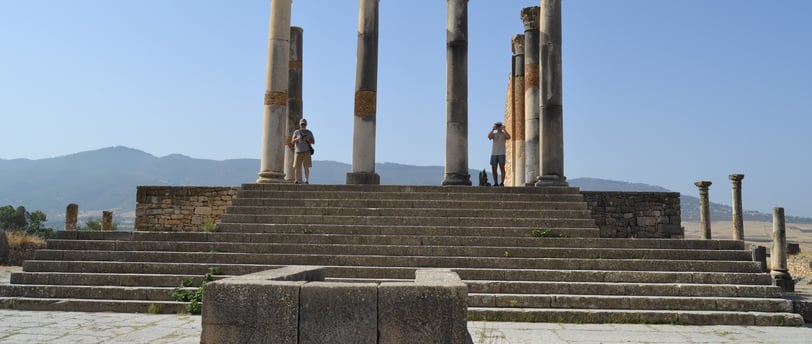Volubilis and the Berber Heritage: A Cultural Fusion Through the Ages
Volubilis is more than just a Roman city; it’s a place where cultures have blended and influenced each other for centuries. One of the most fascinating aspects of this ancient site is the way it reflects the fusion of Roman and Berber heritage, creating a unique cultural tapestry that has shaped the region’s history. The Berbers, the indigenous people of North Africa, had a significant presence in the area long before the Romans arrived. When the Romans established Volubilis as a provincial capital, they brought their architecture, engineering, and way of life with them. However, instead of erasing the existing Berber culture, a fascinating blend occurred. This cultural fusion is evident in the architecture, art, and daily life of the city. The use of local materials and building techniques alongside Roman engineering is a prime example of this blend. The city’s layout and many of its structures, while Roman in design, incorporate Berber influences in subtle ways. This mix can be seen in the way buildings were constructed, using traditional Berber methods alongside Roman innovations. The influence of Berber culture is also apparent in the artifacts found at the site, from pottery to tools, which reflect a blend of Roman and Berber styles. The city’s mosaics, while depicting Roman myths and scenes, are also thought to have been created by local Berber craftsmen, blending Roman artistic techniques with local traditions. Volubilis stands as a symbol of cultural exchange and coexistence. It’s a reminder that history is rarely black and white; instead, it’s a complex and layered narrative shaped by the interactions of different peoples and cultures. Visiting Volubilis offers a unique opportunity to explore this rich history and appreciate the ways in which different cultures can influence and enrich one another.
8/13/20241 min read


My post content
Subscribe newsletter
Coypright @2021 volubilis Tours – All Rights Reserved
